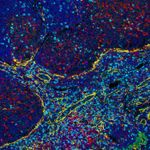Investigating the neurological pathways underlying vocal communication
In this episode of Talking Techniques, we catch up with Michael Long, Principle Investigator of the Long Lab at New York University (NY, USA), where he investigates the neural circuits that underlie vocal communication.
Through the examination of animal models, from songbirds to the rare singing mice of Costa Rica, with cutting-edge imaging techniques Michael reveals fascinating insights into vocal communication. We also discuss his human experiments, working alongside neurosurgeons, with emerging electrophysiological probes to monitor the neural activity of participants as they speak and interact, ultimately revealing how this research could begin to provide solutions for neurological conditions impacting communication, such as autism.
Contents:
- Introduction: 00:00 – 01:40
- Investigating neural circuits underlying vocal communication: 01:40 – 04:15
- Techniques to explore animal models of vocal communication: 04:15 – 06:25
- The impact of cooling brain regions on songbird singing: 06:25 – 07:50
- The techniques used to investigate animal models: 07:50 – 12:20
- Songbirds: 07:50 – 09:45
- The singing mouse: 10:00 – 12:20
- Investigating neural circuits in humans during speech: 12:20 – 16:30
- Investigating neural circuits in humans during conversation: 16:30 – 19:00
- Moving beyond neural area identification towards understanding neural pathways and mechanisms: 19:00 – 21:40
- Navigating neuropixels, big data and safety: 21:40 – 26:10
- If there was one thing you could ask for to help you better understand these pathways, what would it be? 26:10 – 27:55
- The experience of working with patients undergoing neurosurgery: 27:55 – 30:30
- The potential impact on speech disorders and autism: 30:30 – 33:15
Hosted on Acast. See acast.com/privacy for more information.









